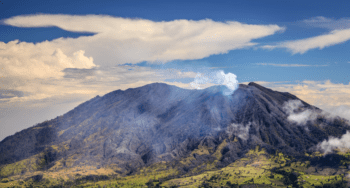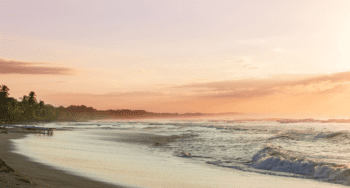Quick Guide to Sirena Station Corcovado
Sirena Station sits deep in Corcovado National Park on the Osa Peninsula, accessible only by boat or 8-hour jungle trek. This 3-day minimum adventure costs $400-500 per person but delivers Costa Rica’s highest wildlife concentration—90% chance for scarlet macaws, 70% for tapirs, all four monkey species guaranteed. You’ll sleep in basic ranger station bunks, hike muddy trails, and need mandatory guides, but nowhere else in Costa Rica offers this level of biodiversity in primary rainforest where jaguars actually roam.
Key Details:
- Total cost: $400-500 per person (park fees, mandatory guide, boat transport, accommodation)
- Access routes: Drake Bay (45-min flight from San José, 1.5-hour boat) or Puerto Jiménez (50-min flight or 6-7 hour drive requiring 4×4, 2-hour boat)
- Accommodation: Ranger station bunks ($30/night) or camping ($4-6/night)—cash only
- Best timing: December-April dry season for easier trails; May-November green season for fewer crowds
What You Need to Know:
- Book certified guides 2-3 months ahead—they handle park permits and know wildlife patterns
- Pack everything including food—no services at station beyond basic bunks and cold showers
- Moderate fitness sufficient, but 90% humidity at 85-95°F tests everyone differently
- Puerto Jiménez offers more flexibility and lower costs than Drake Bay as your gateway
Planning your Osa Peninsula adventure? Contact Vamos Rent-a-Car for 4×4 vehicles equipped for the rough final stretch to Puerto Jiménez.
Sirena Station sits deep in the heart of Corcovado National Park’s 103,000 acres of primary rainforest on the Osa Peninsula, accessible only by boat or an 8-hour jungle trek. This isn’t a day-trip destination—you’ll need a minimum of three days, around $400-500 per person, a mandatory certified guide, and advance reservations to experience what the Guardian called “the most biologically intense place on Earth.” The payoff? You’re looking at the highest concentration of wildlife in Costa Rica, including scarlet macaws, all four monkey species, tapirs foraging along the beaches at dawn, and a legitimate (though still slim) chance of spotting a jaguar.
Here’s the reality that most tour websites gloss over: Sirena Station is rustic. You’ll sleep in basic ranger station bunks or a tent, shower with cold water, and hike trails that turn into muddy obstacle courses during green season. But if you’re the kind of traveler who measures a trip’s success by wildlife sightings rather than resort amenities, Sirena delivers experiences you simply can’t get anywhere else in Costa Rica.
Key Takeaways
- Minimum commitment: 2 nights (3 days) required—day trips aren’t feasible due to remote location and boat schedules
- Budget range: $400-500 per person covers park fees, mandatory guide, boat transport, and basic accommodation
- Access points: Choose between Drake Bay (1.5-hour boat ride) or Puerto Jiménez (2-hour boat ride or 8-hour Los Patos trail hike)
- Wildlife probability: Near-guaranteed scarlet macaws and monkeys; 70% chance for tapirs; 5% chance for jaguars even with experienced guides
- Best timing: December through April offers drier trails and calmer seas, but wildlife viewing stays excellent year-round
- Physical requirements: Moderate fitness sufficient for most trails, though humidity and heat challenge even fit hikers
- Booking window: Reserve 2-3 months ahead for dry season; green season offers more flexibility
Why Visit Sirena Station Instead of Other Corcovado Entry Points?
Corcovado has three ranger stations—San Pedrillo, Los Patos, and Sirena—but Sirena stands apart for one critical reason: it’s the only station located in the park’s interior rather than its edges.
This central position means wildlife doesn’t have to choose between park habitat and human-disturbed areas outside the boundaries. Animals here exhibit more natural behaviors because they’re not edge species habituated to human presence. You’ll watch white-lipped peccaries rooting through the forest floor, encounter troops of squirrel monkeys feeding in the canopy, and hear howler monkeys at volumes that make your chest vibrate—all acting as if you’re the visitor in their home, because you are.
The trails radiating from Sirena access multiple ecosystems within a morning’s hike. You’ll walk from primary rainforest to coastal mangroves to stretches of deserted Pacific beach where tapirs leave tracks in the sand overnight. San Pedrillo and Los Patos offer excellent experiences, but they’re entry points. Sirena is the destination.
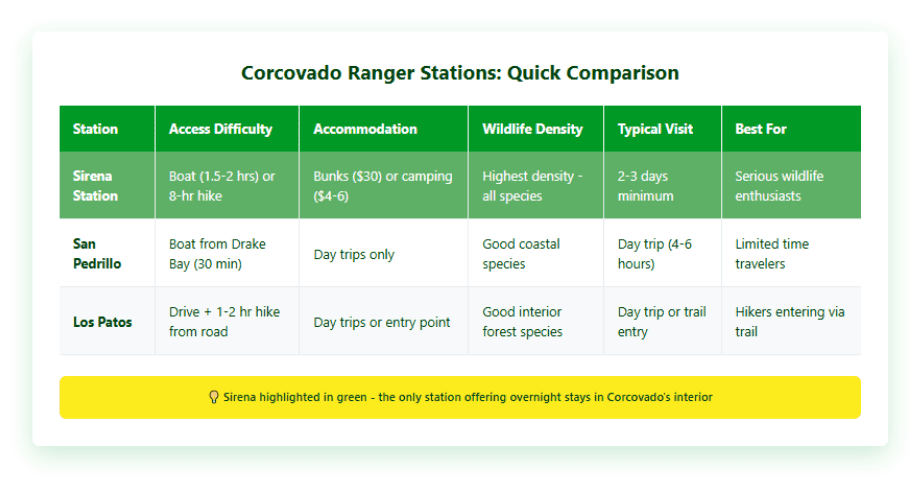
How Do You Actually Get to Sirena Station?
Access to Sirena requires choosing between two gateway towns on the Osa Peninsula: Drake Bay to the north or Puerto Jiménez to the south. Your decision shapes your entire experience and budget.
Which Gateway Works Better: Drake Bay or Puerto Jiménez?
Drake Bay feels more remote because it is—there’s no road connecting it to the rest of Costa Rica. You’ll either fly into the small airstrip on a 12-seater plane (45 minutes from San José, around $120-150 each way) or take a bumpy, sometimes adventurous taxi-boat combination from Sierpe. The village itself caters almost exclusively to ecotourism, with tour operators, lodges, and dive shops dominating the economy.
From Drake Bay, boats to Sirena take about 1.5 hours along the coast. Morning departures typically leave around 6:00-7:00 AM to catch calmer seas, and the ride gives you chances to spot dolphins, sea turtles, and occasionally humpback whales during migration season (December-April and July-October). The boat deposits you directly on Sirena’s beach, which means timing with tides and weather conditions.
Puerto Jiménez offers more flexibility and typically costs less. It’s accessible by car—a long, winding drive from San José (6-7 hours) that absolutely requires a 4×4 for the final unpaved stretches. Most visitors fly in from San José instead (50 minutes, $100-140 each way), which saves a full day of driving.
The town feels more like a working community than a tourist hub, with a mix of locals, conservationists, and travelers. You’ll find better restaurant variety, a proper supermarket for last-minute supplies, and the only ATM on this side of the peninsula (Sirena Station is cash-only for any incidentals).
Boats from Puerto Jiménez take about 2 hours to reach Sirena, departing from the small dock in town. Alternatively, serious hikers can trek the Los Patos trail—an 8-hour, 14-kilometer journey through primary rainforest that enters the park from inland rather than the coast. This route requires exceptional fitness and experience with jungle conditions, but it eliminates boat costs and offers phenomenal wildlife encounters along the way.
What About Driving from San José?
If you’re planning to drive to Puerto Jiménez, understand that this isn’t your typical Costa Rica road trip. The journey from San José eats up 6-7 hours even in perfect conditions, with the final 30-40 kilometers transitioning from paved highway to rough gravel roads that flood during heavy rains.
You’ll need a 4×4—not the small crossover kind that technically has four-wheel drive, but an actual SUV with proper ground clearance and off-road capability. The roads twist through the Fila Costeña mountain range before dropping down to the coastal plains, with sections that wash out during green season and potholes that appear seemingly overnight.
That said, having your own vehicle in Puerto Jiménez offers real advantages. You can stock up on supplies at the supermarket, make side trips to nearby beaches like Playa Platanares or Matapalo, and maintain flexibility in your schedule that boat and flight times don’t allow.
If you’re flying into Liberia (LIR) rather than San José (SJO), add another 1.5-2 hours to these drive times. Most travelers find it more practical to fly into San José and take the domestic flight to Puerto Jiménez, saving the rental car exploration for regions with better road infrastructure like Guanacaste or the Central Pacific.
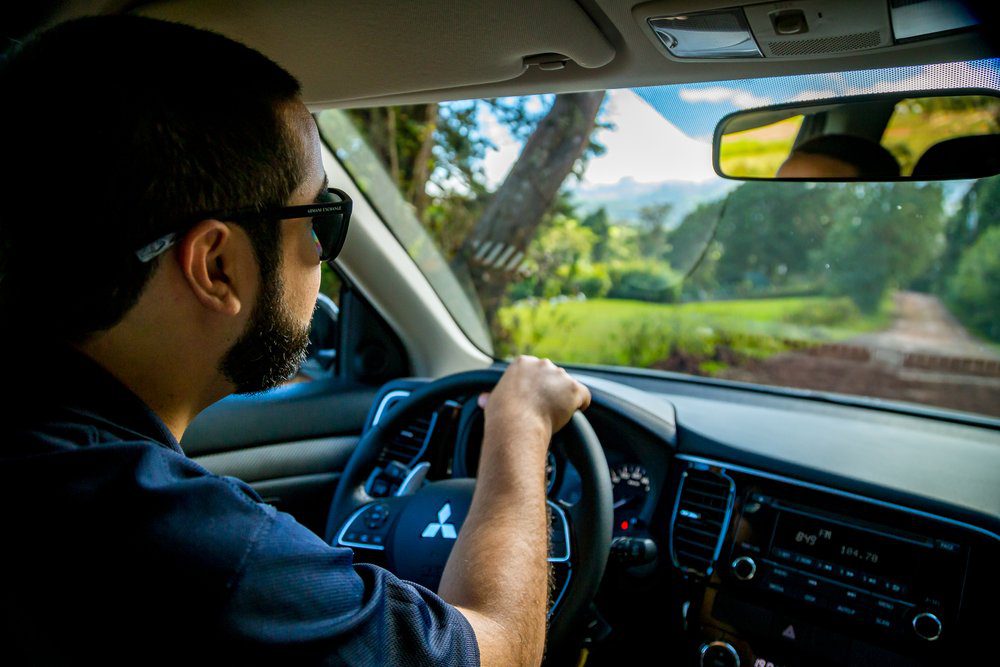
What Does It Actually Cost to Visit Sirena Station?
Let’s break down the real numbers, because tour package prices often bury the details.
Park entrance fees: $30-45 per person depending on whether you qualify as a resident or pay the foreigner rate. This covers your entire stay—you don’t pay daily.
Mandatory guide fees: $150-200 per person per day. Yes, mandatory. The park service requires certified guides for all Sirena visits, and this isn’t negotiable. Guides typically charge for the full duration including travel days.
Boat transportation: $80-120 per person round-trip from either Drake Bay or Puerto Jiménez. Prices fluctuate with fuel costs and group sizes—you’ll pay less if you join an existing departure.
Ranger station accommodation: $30 per person per night for bunk beds in the dorm-style sleeping area, or $4-6 per night if you bring your own tent and camp on the designated grounds.
Meals: The ranger station doesn’t provide food beyond emergency supplies. You’ll bring everything in, which means either carrying supplies yourself or paying your guide to arrange catering (typically $15-25 per person per day for basic rice-and-beans meals).
Real total for a 2-night visit: Plan on $400-500 per person minimum. This buys you the standard experience—shared guide costs, boat transport, ranger station bunks, and basic meals. Private guides, better food, or camping upgrades push costs higher.

Where Do You Sleep at Sirena Station?
The ranger station offers two accommodation options, and neither involves plush linens or air conditioning. This is bare-bones conservation lodging designed to minimize human impact while allowing overnight access to the park.
What Are the Ranger Station Bunks Like?
The main building houses dorm-style sleeping quarters with about 20-30 bunk beds depending on current capacity. You’ll get a mattress, mosquito netting, and a locker for valuables. That’s it. Bring your own sleeping bag or sleeping sheet, though honestly, at night the humidity makes most people sleep on top of everything anyway.
Bathrooms are shared, basic, and functional. Cold water showers work fine in this climate—after a day of hiking in 90-degree heat with 95% humidity, cold water feels incredible. Toilets flush, sinks work, and everything stays reasonably clean considering the remote location.
The station has electricity, but it’s limited and unreliable. Charge your devices when power’s available, and bring backup battery packs. Cell service doesn’t exist out here, which means you’re genuinely unplugged for your entire stay.
Should You Camp Instead?
The designated camping area sits near the ranger station but gives you more separation from other guests. You’ll pay $4-6 per night instead of $30, which matters if you’re budget traveling or extending your stay.
The downsides? You’re carrying in your tent, sleeping pad, and all camping gear either on the boat or across the Los Patos trail. You’ll still use the ranger station bathrooms and common areas, but you’ll sleep in your tent listening to howler monkeys and whatever else wanders through the forest at night.
Some visitors love the camping experience specifically because it feels more immersive. Others discover that sleeping in a wall tent while tapirs snort around outside tests their comfort zone more than expected. Know yourself before choosing this option.

What Wildlife Will You Actually See at Sirena?
Let’s set realistic expectations because this is where promotional materials and reality often diverge.
Scarlet macaws: Near-guaranteed sightings, multiple times per day. The beach almond trees around the ranger station attract them, and their loud squawks announce their presence before you spot the brilliant red-and-blue plumage. They’re one of Corcovado’s conservation success stories, with populations recovering after decades of protection.
Monkeys: All four Costa Rican species live here—white-faced capuchins, howler monkeys, spider monkeys, and tiny squirrel monkeys. You’ll see at least two species daily, likely three. The squirrel monkeys are endangered and found almost exclusively on the Osa Peninsula which makes the encounters here particularly special.
Tapirs: Your odds run about 70% with experienced guides who know their patterns. Dawn and dusk beach walks offer the best chances, as tapirs feed on beach almond fruits and aren’t particularly wary of humans in this protected space. These prehistoric-looking mammals weigh up to 600 pounds and leave distinctive three-toed tracks all over the beaches.
Coatis, agoutis, and peccaries: Practically guaranteed. These mid-sized mammals are everywhere, often approaching the ranger station hoping for dropped food (don’t feed them—rangers enforce this strictly).
Jaguars: They live here. Rangers see tracks and occasionally spot them. Your realistic odds? Maybe 5% even with guides who’ve worked Corcovado for years. Jaguars are crepuscular hunters who avoid humans, and this rainforest gives them ample space to do exactly that. If you see one, you’ve experienced something genuinely rare. Don’t plan your trip around it.
Birds beyond macaws: Prepare for sensory overload. Toucans, tanagers, motmots, trogons, hawks, herons—the morning chorus starts around 4:30 AM and doesn’t stop until nightfall. Bring binoculars and a bird guide if you’re serious about identification, or just enjoy the constant display of color and sound.
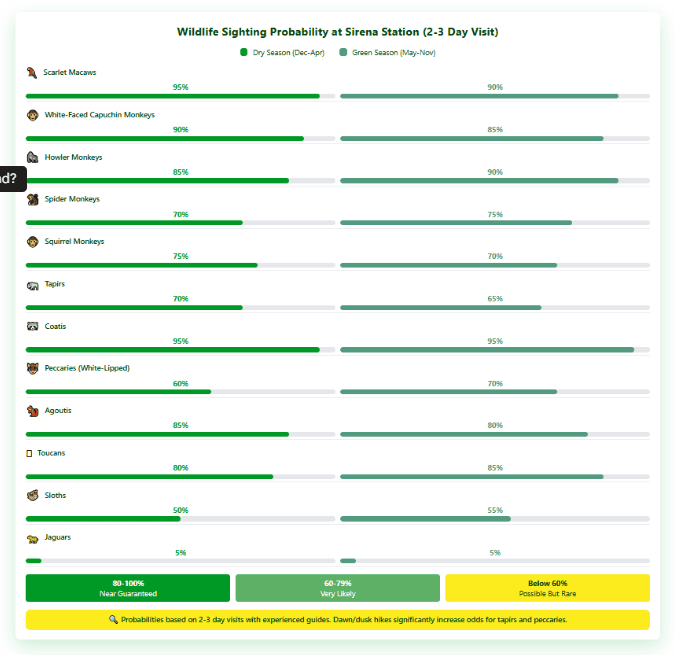
When Should You Visit Sirena Station?
Corcovado’s location on the Osa Peninsula gives it a microclimate distinct from the rest of Costa Rica—wetter, more humid, and with less dramatic seasonal variation.
Does Dry Season Really Matter Here?
December through April brings Costa Rica’s dry season, which translates to “less rain” rather than “no rain” at Sirena. You’ll still get occasional showers, but trails stay more navigable, seas remain calmer for boat transport, and you won’t fight mud on every step.
Wildlife viewing stays excellent because animals concentrate around water sources and fruiting trees. This is peak season for tourism throughout Costa Rica, which means higher costs, fuller ranger station bunks, and the need to book 2-3 months ahead.
May through November is green season, when the Osa Peninsula receives some of Costa Rica’s heaviest rainfall. Trails become muddy challenges that require more physical effort. Boat rides to Sirena can get canceled due to rough seas, particularly June through August.
But here’s the counterpoint: green season brings advantages that serious wildlife enthusiasts appreciate. Fewer visitors mean quieter trails where animals behave more naturally. The rainforest explodes with new growth, fruiting trees attract more wildlife, and prices drop by 20-30%. If you can handle mud and pack appropriate rain gear, green season visits often deliver more intense experiences.
The absolute best windows? February through early April offers the driest conditions before the green season transition, while December through January combines good weather with holiday flexibility if you’ve already committed to that season.
What Do You Need to Pack for Sirena Station?
The ranger station provides only shelter and bathroom facilities. Everything else comes with you.
Sleeping gear: Lightweight sleeping bag or sleep sheet, though many visitors just use the sheet in this heat. The ranger station provides mosquito netting over bunks, but campers need their own tent and pad.
Clothing: Quick-dry shirts and pants, not cotton. Long sleeves and long pants work better than shorts despite the heat—protection from sun, insects, and vegetation matters more than ventilation. Seal at least one set of dry clothes for the evening in waterproof bags.
Footwear: Lightweight hiking boots that can handle mud and dry quickly. The trails alternate between sand, exposed roots, and muddy sections. Some visitors successfully use trail running shoes instead of boots—it’s personal preference.
Rain protection: Waterproof jacket regardless of season. During green season, add rain pants and a pack cover. Even in dry season, afternoon showers happen regularly.
Sun and insect protection: Strong sunscreen, wide-brimmed hat, and serious insect repellent. The beach sections offer no shade, and sand fleas are present. DEET concentrations of 25-30% work well without being overkill.
Water: Bring at least 2-3 liters of capacity in reusable bottles. The ranger station provides treated water for refills, but trails have no water sources.
Food: Pack everything for your stay unless your guide arranges meals. Simple, non-perishable items work best—energy bars, nuts, dried fruit, tuna pouches, crackers. The ranger station has no refrigeration or cooking facilities beyond a communal area with limited equipment.
Extras: Headlamp with backup batteries, small first-aid kit, any prescription medications, dry bags for electronics and important documents. Leave valuable jewelry and unnecessary electronics at home.
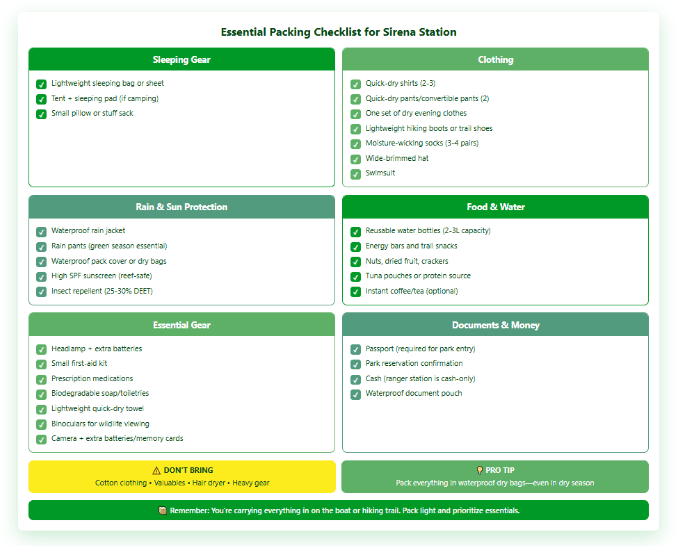
What Physical Shape Do You Need to Be In?
Moderate fitness handles most Sirena trails, but understand that “moderate” in humid rainforest conditions tests people differently than “moderate” on groomed park trails back home.
The standard trails from the ranger station range from 2-6 kilometers one way, relatively flat, and well-maintained by park standards. But you’re hiking in 85-95°F heat with humidity that often tops 90%. Your body works harder to cool itself, and you’ll sweat constantly regardless of fitness level.
The trails themselves present obstacles—tree roots, muddy sections (particularly in green season), occasional stream crossings, and uneven surfaces. You don’t need to be a marathon runner, but you should be comfortable walking 4-6 hours in challenging conditions without struggling.
People with knee or ankle issues sometimes find the terrain more difficult than expected, particularly on muddy trails where every step requires focus. Trekking poles help significantly if you have any concerns about stability.
The Los Patos trail entry route requires substantially more fitness—8 hours of continuous hiking with elevation changes, stream crossings, and full exposure to jungle conditions. Only attempt this route if you regularly hike long distances and feel confident in your endurance.

How Do You Book Your Sirena Station Visit?
The booking process requires more advance planning than most Costa Rica adventures because you’re coordinating park permits, guide services, and transportation.
Start by contacting certified Corcovado guides 2-3 months before your planned visit, particularly for dry season trips. The park service maintains a list of certified guides, and your choice of guide often determines your experience quality more than any other factor. Look for guides with naturalist backgrounds who can explain what you’re seeing rather than just pointing out wildlife.
Your guide typically handles park permit reservations directly through the SINAC (Sistema Nacional de Áreas de Conservación) system. They’ll need exact dates, names from passports, and decisions about ranger station versus camping accommodation.
Book boat transportation through your guide or separately through operators in Drake Bay or Puerto Jiménez. Confirm departure times and pickup locations well in advance—boats leave on schedule regardless of stragglers.
If you’re driving to Puerto Jiménez, reserve your 4×4 rental as early as possible. Vamos Rentacar maintains vehicles specifically equipped for Osa Peninsula conditions, with the ground clearance and rugged build you’ll need for those final unpaved kilometers. Their Puerto Jiménez location (opening 2025) will offer the most convenient access point, though their San José and Liberia airports currently serve as your best starting points for this route.
Your Next Steps for Planning This Trip
First, commit to dates. Sirena requires a 3-day minimum, so look at your Costa Rica itinerary and carve out that full window. This isn’t something you squeeze between beach days and volcano tours.
Second, choose your gateway. Drake Bay offers the more remote, immersive approach at slightly higher cost. Puerto Jiménez provides easier access, especially if you’re building a broader Osa Peninsula exploration into your trip.
Third, contact certified guides and get quotes. Don’t just book with whoever responds first—ask about their naturalist experience, typical group sizes, and whether they speak your language fluently enough for detailed wildlife explanations.
Fourth, if you’re driving to Puerto Jiménez, secure your 4×4 rental early. The Osa Peninsula isn’t the place to arrive and then hope you can upgrade to a suitable vehicle on the spot. Vamos Rent-A-Car‘s fleet includes vehicles built for exactly these conditions, and their team can walk you through current road conditions and recommended routes.
Finally, set your expectations correctly. Sirena Station delivers extraordinary wildlife experiences in one of the most biodiverse places on the planet. But you’ll sleep in basic bunks, shower in cold water, and hike in conditions that challenge even experienced outdoor enthusiasts. If you’re prepared for the reality rather than a fantasy version, those three days in Corcovado will likely become your trip’s defining memory—the one you’re still talking about years later when someone asks about Costa Rica.
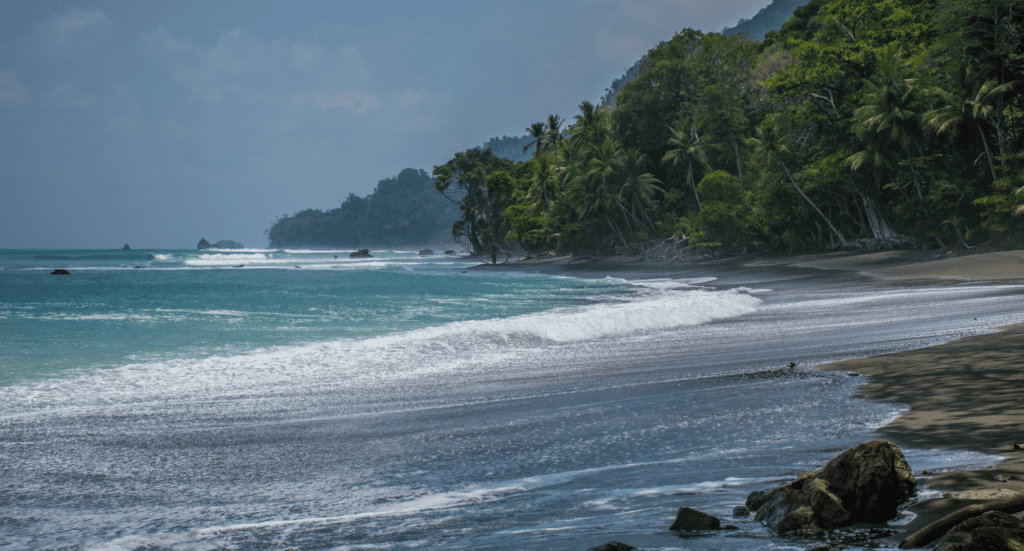
Frequently Asked Questions
Is Sirena Station in Corcovado National Park worth the effort and cost?
Worth it if you’re serious about wildlife. This is Costa Rica’s most biodiverse spot—you’ll see scarlet macaws constantly, have a 70% chance of spotting tapirs, and encounter all four monkey species. The tradeoff? You’re committing 3 days minimum, spending $400-500 per person, sleeping in basic ranger station bunks with cold showers, and hiking in intense heat and humidity. It’s not a casual day trip—it’s an expedition into primary rainforest where jaguars actually live. If you measure trip success by resort amenities, skip it. If you want the best wildlife viewing in Costa Rica and can handle rustic conditions, Sirena delivers experiences you simply can’t get anywhere else.
How much does it actually cost to visit Sirena Station in Corcovado?
Budget $400-500 per person for a standard 2-night visit. This breaks down to $30-45 park entry, $150-200 per day for mandatory guide fees (non-negotiable), $80-120 round-trip boat transport from either Drake Bay or Puerto Jiménez, $30 per night for ranger station bunks (or $4-6 if you camp), and $15-25 daily for basic meals if your guide arranges catering. The ranger station doesn’t provide food, so you’re either packing everything yourself or paying your guide to handle it. Private guides and better meal options push costs higher. This isn’t cheap, but you’re accessing one of the world’s most biodiverse protected areas with expert guidance.
Can you visit Corcovado National Park without a guide?
No. The park service requires certified guides for all Sirena Station visits—this rule is strictly enforced and non-negotiable. Guides cost $150-200 per person per day but do more than just meet regulations. They spot wildlife you’d walk right past, explain what you’re seeing, handle park permit reservations, arrange boat transportation, and know animal behavior patterns that dramatically improve your sighting odds. The Los Patos and San Pedrillo stations technically allow unguided access, but Sirena—the park’s interior station with the best wildlife density—mandates guides for everyone.
How do you get to Sirena Station from San José?
You’ve got two gateway options. From Drake Bay: Fly from San José (45 minutes, $120-150 each way) then take a 1.5-hour boat ride along the coast to Sirena. Drake Bay has no road access, so you’re either flying or taking a taxi-boat combo from Sierpe. From Puerto Jiménez: Fly from San José (50 minutes, $100-140 each way) then take a 2-hour boat ride, or drive 6-7 hours requiring a 4×4 for the final 30-40km of unpaved roads. Most visitors fly to one of these gateways since driving from San José eats up a full day and demands serious off-road capability. Experienced hikers can skip the boat by trekking the 8-hour Los Patos trail, but that requires exceptional fitness and jungle hiking experience.
What’s the best time to visit Sirena Station—dry season or green season?
December through April (dry season) offers easier trails, calmer boat rides, and no mud battles on every hike. Wildlife viewing stays excellent because animals concentrate around water sources. This is peak season though, meaning higher costs, fuller bunks, and you’ll need to book 2-3 months ahead. May through November (green season) brings heavy rain that turns trails into muddy challenges, but also 20-30% lower prices, far fewer visitors, and often more intense wildlife experiences on quieter trails. The absolute best windows are February through early April for the driest conditions, or December through January if you want good weather during holiday travel. If you can handle mud and pack proper rain gear, green season delivers incredible experiences at better value.
Where do you actually sleep at Sirena Station?
Two options, both basic. The ranger station has dorm-style bunks ($30/night) with a mattress, mosquito netting, and locker for valuables. You’ll share bathrooms with cold showers—which actually feel great after hiking in 90-degree heat. Bring your own sleeping bag or sheet. Electricity is limited and unreliable, cell service doesn’t exist, and there’s zero resort amenities. The second option is camping ($4-6/night) in the designated area near the station, where you bring your own tent and gear but still use the ranger station bathrooms. Some people love camping because it feels more immersive. Others discover that sleeping in a tent while tapirs snort around outside tests their comfort zone more than expected. Either way, this is conservation lodging designed to minimize human impact, not provide luxury.
What are the chances of seeing jaguars and other wildlife at Sirena?
Scarlet macaws: near-guaranteed, multiple times daily. All four monkey species: 70-90% chance. Tapirs: 70% with experienced guides who know their patterns, especially on dawn beach walks. Coatis, agoutis, peccaries: practically guaranteed. Jaguars: realistic odds are about 5% even with guides who’ve worked Corcovado for years. They live here, rangers see tracks regularly, but jaguars avoid humans and this massive rainforest gives them plenty of space. If you see one, you’ve experienced something genuinely rare—don’t plan your trip around it. The overall wildlife density at Sirena is unmatched in Costa Rica, so even without a jaguar you’ll have constant animal encounters that make places like Manuel Antonio feel like a zoo by comparison.
Do you need to be in good shape to visit Sirena Station?
Moderate fitness handles most Sirena trails, but understand that “moderate” in 85-95°F heat with 90%+ humidity tests people differently than back home. The trails themselves are relatively flat, ranging 2-6km one-way from the ranger station, with obstacles like tree roots, muddy sections (especially green season), and stream crossings. You should be comfortable walking 4-6 hours in challenging conditions without struggling. People with knee or ankle issues sometimes find muddy trails harder than expected since every step requires focus—trekking poles help significantly. The Los Patos trail entry route requires substantially more fitness: 8 hours of continuous hiking with elevation changes and full jungle exposure. Only attempt that route if you regularly hike long distances. You don’t need to be a marathon runner for Sirena, but sitting at a desk all year then showing up won’t be comfortable.


